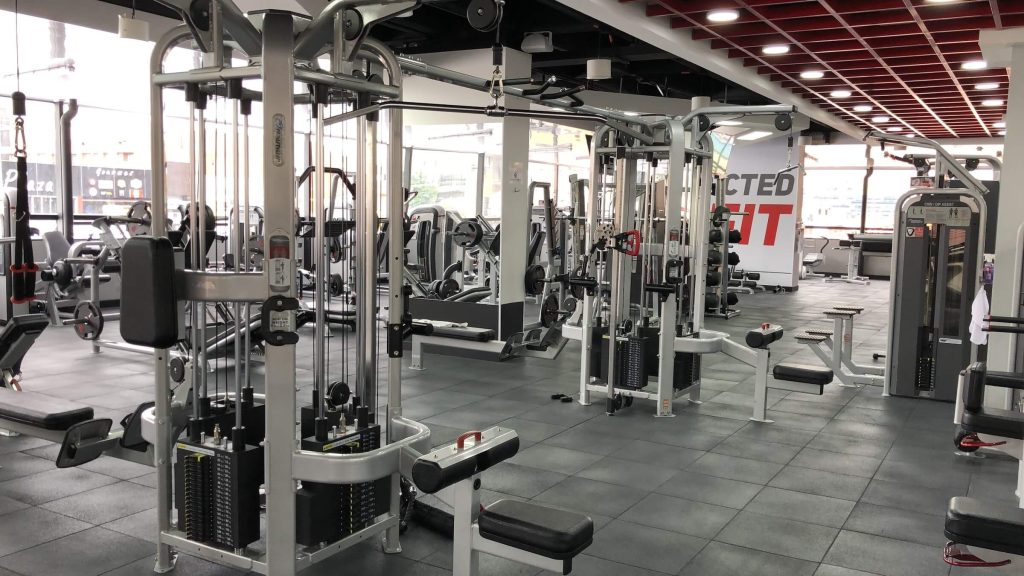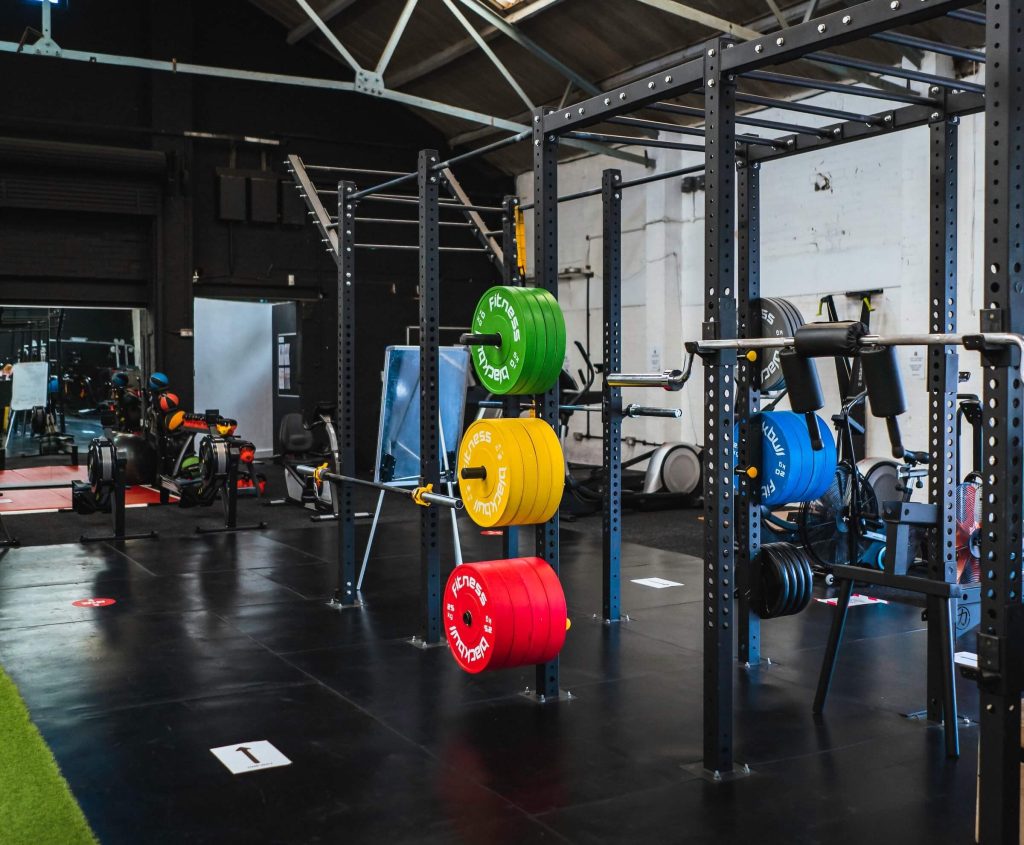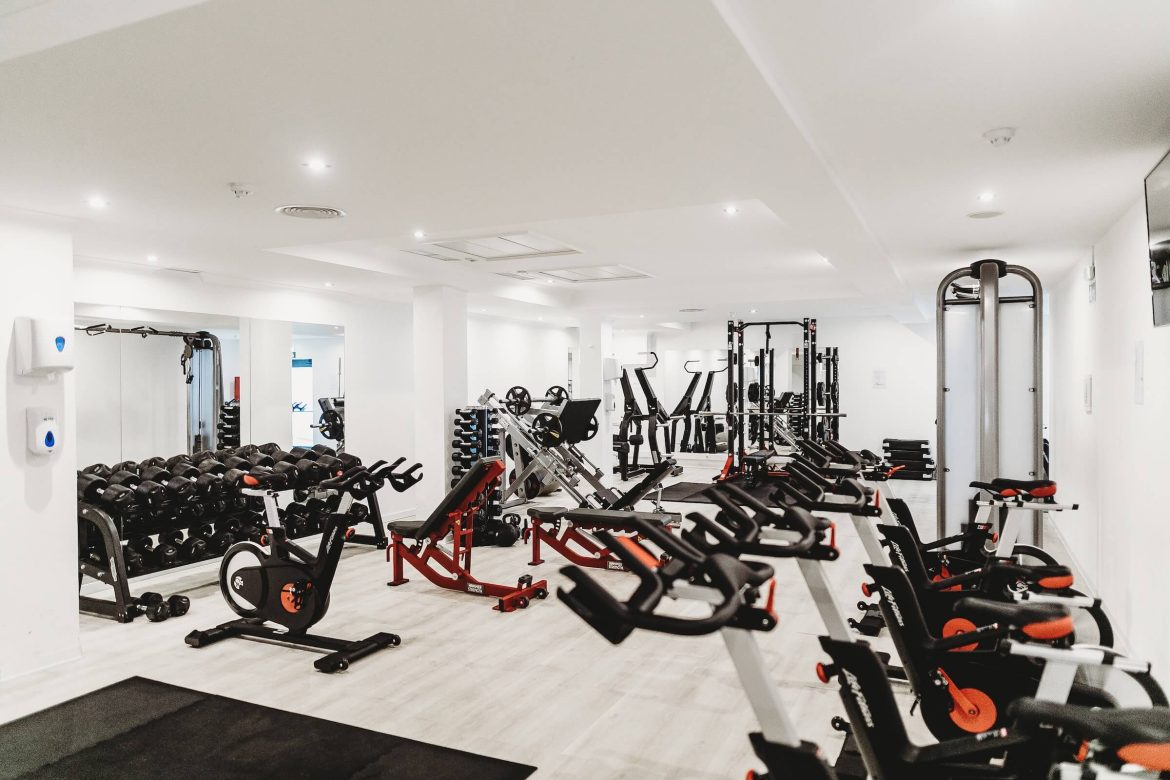Most gym owners get into the business because it seems like the logical next step for them. They enjoy working out, have personal training experience, and are unsatisfied with the way their gym or fitness center operates. But these aren’t necessarily enough reasons to open your own gym.
The gym business, like any small business, requires commitment, time, and a significant budget. Gym owners are responsible for ensuring their establishment pulls in enough revenue, their clients achieve their fitness goals, and owners even have to make sure that the gym environment is welcoming and beginner friendly enough.
So before opening a gym, you need to run through7 a checklist template that helps you navigate all of these things – start-up and operating costs, business plan, and even operational plans.
Here are some of the biggest things to consider while thinking of opening your own gym.
Profitability Checklist: 3 Reasons Why Opening Your Own Gym is Profitable
While being a gym owner may seem daunting, the fitness business is highly lucrative. For instance, 39% of Americans are gym members, with the average American spending about $30 on a gym membership (Zippa). These stats prove that your fitness center can make more profit with proper marketing and location.
With some initial investment in gym equipment and free weights, you can drive foot traffic into your gym and really start generating revenue. You may have heard, though, that small gyms aren’t as profitable as you think. That notwithstanding, there are many reasons to start a gym business.
Here are 3 simple reasons why your gym will be profitable.
Everybody Wants to be Healthy
The global market value of the fitness industry exceeds $96 billion and is expected to increase to $434.74 billion by 2028 (Statistica). And even though gym membership fees aren’t growing, more people are prioritizing their physical health, which means more potential members.
Here’s one more point to consider in the profitability section of your business plan – more and more people are convinced of the health benefits of exercise and won’t mind spending money to stay fit.
Fitness isn’t Seasonal
Staying healthy isn’t a trend, and many people have realized this. Unlike many industries that depend on seasons to make a profit, having your own gym business means you can maintain profitability year-round.
Early in the year, you’ll receive an influx of people who need to lose their Christmas weight. As the year progresses, you can expect traffic from individuals looking to maintain their figures. Preparing for summer break. Losing weight for the holidays; the list goes on.
And remember, there are also fitness enthusiasts like you who maintain a gym subscription year-round
Gyms Allow You to Maintain a Healthy Work-Life Balance
Running a gym business doesn’t have to be as time-consuming as running other businesses; that’s one thing that checklist templates often exclude. You can hire competent managers, collaborate with personal trainers, and leave your members in great hands.
You’ll probably drop in frequently because the gym is your baby, but you’re allowed to have a life outside of being a gym owner.
Legal Requirements Checklist for Opening a Gym

Your gym location can determine the legal requirements you should get familiarised with. For instance, gyms with proper licensing in California are expected to hire staff with CPR training. This may be different if you’re in a different state.
Also, you need a physician’s collaboration in case of emergencies. There’s also the fact that your trainers need PT licensing and personal trainer liability waivers to cover them in accidents. When you get all these in order, securing a business loan and keeping your gym out of legal trouble will be so much easier.
Zoning Requirements
Not all commercial spaces are perfect for gyms. Before opening a gym, check that the area is zoned for a gym, so you’re on the same page with the law. It’s also smart to consult a lawyer and get the proper liability insurance before setting up your fitness business.
A Business License
Gym owners are often personal trainers themselves, which is great. However, you’ll need to get a business license as well to own and run your gym. The good news is that if you’re already working with a lawyer, they can walk you through the guidelines in your area and get you set up on that front.
Insurance
If you’ve ever seen a “gym idiots” fail video on YouTube, you’ll know that it’s easy for people to get injured in the gym. If you have legal counsel, you probably already know to get insurance. If you don’t, GloFox has an amazing resource on the 8 kinds of insurance your gym needs.
How to Open a Gym in a Small Town: Location checklist

Typically, a small town can be anywhere from 500 to 10 000 residents depending on its location. Opening a gym in an area like this means your gym will be the town’s fitness hub. there are pros and cons to this approach.
On the one hand, your gym will basically sell itself, and you can focus a little less attention on the marketing side of things.
But on the other hand, you could be facing stiff competition if another gym opens up. Worse, you’ll be stuck if the town doesn’t have a fitness culture. Here are three tips to help you effectively run your gym in a small town.
Know Your Target Market
Are there other forms of physical activities for the residents? Answering this question will let you know which equipment to add to your gym. It can also help you integrate into the community more easily.
You also have to ask, what are the age ranges of residents? If the town is a kind of retirement settlement, then you need to structure your gym to appeal to older clients. That means a CrossFit gym is probably not your best bet.
Understand the Costs
Opening a gym requires operational costs and start-up costs. Your start-up costs will include business license fees, equipment purchases, real estate, and initial marketing. On the other hand, operating costs include rent, taxes, hiring staff, and utilities such as mops, vacuums, and electricity bills.
It’s okay if you don’t have a plan for all of these upfront. But, you will have to get to them eventually, so it’s a good idea to work them into your business plan as soon as you can.
Become a Part of the Community
If the plan is to make your gym THE community gym, then it’s critical to. become a member of the community. Integrate by joining activities, getting to know other business owners, and forming connections. They will be invaluable after you launch.
How to Run a Gym Effectively: Operations Checklist
So you already know that to run a successful gym, you have to create a solid business plan, have sufficient capital, and launch a great marketing campaign.
But what do you do to actually run the gym? While you don’t need a play-by-play plan for the daily operations, having a roadmap at the back of your mind can help you weather the storms when they inevitably come.
Here are some things to consider when thinking about running a gym effectively.
Build Relationships with Members

The success of your gym business depends on your clients coming back. Retaining and turning members into loyal customers is easy when you engage them. But what’s even more incredible is that building solid relationships goes beyond retaining members.
It can help foster an atmosphere of community where people feel empowered to chase and achieve their fitness goals.
Chat up subscribers and introduce yourself. Offer helpful tips to enable them to get and maintain the best results.
Invest in Tech
Everything from member tracking to loyalty rewards can be automated with the right tech. Doing so will not only make your job easier, but it will also improve your customer experience because they know what to expect, and they know that the systems work.
Have an Online Presence
Social media has become critical to the survival of any business. You can get everything from remarkable visibility to free marketing and even extra revenue online. Consider launching social media campaigns that constantly engage your online followers and offline members.
If you have the team members for it, you can even launch and manage your own online communities on Discord or Facebook and provide your subscribers with steady content. This strategy will take your online community membership to the next level, and your gym sales will closely follow.
Once you decide to open a gym business, a thousand and one ideas will race through your mind. You’ll get a ton of great ideas and exciting strategies to shake up the fitness industry. But as all successful gym owners will tell you, you need to get your thoughts in order. That includes getting a gym checklist to help you navigate the territory.
A checklist like that will help you avoid the pitfalls of being unprepared. Luckily, you have this guide. It was designed to guide you through the process of launching your own fitness business and achieving success.
Top 9 considerations before opening your gym
1. Business License
A business license is a permit that an individual must obtain from their city or state to operate a business. Business licenses are required for all businesses, including sole proprietorships and partnerships – with the gym business inclusive. These licenses vary by industry and type of operation.
For your gym business, you will probably also need gym insurance in addition to your license.
Before you open a gym, it is vital to check with your city or state regarding regulations on gym operations. ew you plan to open a health club, gym, or fitness center, you will need a business license.
You may also need zoning permits and other licenses depending on where you plan to open your own gym. According to SBA, to receive a business license, you must register your company as a corporation, limited liability company (LLC), partnership, or other legal entity with either your secretary of state’s office or another government agency.
2. Employer Identification Number (EIN)
The Employer Identification Number (EIN) is a vital aspect of your gym opening checklist. They are essential for paying taxes and reporting your income for legal reasons.
More often, you can obtain an employer identification number through a business attorney and accountant. A business attorney can also help get you a corporate name. If there is an available LLC name, they will be able to help with that too.
You can always choose not to incorporate, but it’s best to have a corporation in place before opening your doors, so you don’t run into any issues later on.
3. Tax ID Numbers (TIN)
If you are opening a gym and have no prior business experience or have never applied for a Tax Identity Number, then it can be confusing. Most gym owners obtain their Tax Identification number from their state’s tax department. The TIN is important when applying for certain types of business licenses. As a result, many gyms have been unable to open because they lack a TIN and cannot obtain one from their home state’s government.
You can obtain a Tax ID Number alongside an Employer Identification Number. The employer Identification Number establishes tax reporting guidelines for your new business, and it allows banks to send payments directly to your company. In addition, if you accept cash payments or solicit donations on behalf of your health club, then having an EIN is required.
Check out the IRS’ resources on TIN for more helpful information.
4. Location
If you’re opening your first gym location, it’s important to think about where your target market lives. Ideally, you want to be located in a neighborhood that has growth potential.
You might also want to consider foot traffic and the geographic location of other gyms and fitness facilities in your area.
There are two ways to look at this rule. One is to open near other gyms because it means that there’s an established market and all you have todo is ramp up marketing.
But on the other hand, other gyms means more competition so you may want to opt for an area with no gys. The catch here is that you may have more work to do when trying to get people in the door.
For established brands, you may want to open a second location in a different market or even grow your business to multiple locations. For smaller, independent gyms, location can mean survival or death.
A lot of factors go into choosing a location for your gym, including crime rates, population, household income levels, and, most importantly, your potential customer base.
5. Equipment and Staff
You can’t have a gym without equipment, and you can’t run a gym without staff. You need to have adequate facilities and staff to satisfy your clients when opening a gym.
The number of gym members that join will determine how much money you make, so having enough of both is vital. If you are unable to hire enough staff, then there is a high chance that your gym won’t be able to meet everyone’s needs, meaning they will leave and find somewhere else for workouts.
Therefore, it is important that you have enough gym equipment in your fitness studio. Refer to this guide if you need help on deciding which equipment to add to your gym.
6. Great atmosphere
Members of your gym or fitness center will expect fun exercise sessions and high energy as they kick their workout routines into gear. They don’t want to be stuck in a stuffy room on an uncomfortable bench; they want to be pumped up and ready to go.
While a gym atmosphere isn’t something tangible you can quickly check off your to-do list, as a gym owner, the responsibility falls to you to make it happen. It could include greeting members personally, using a lively gym decor, or even picking an amazing name.
Setting the atmosphere could also mean allowing independent personal trainers to train clients in your gym so there’s always an atmosphere of expertise and activity.
While picking names for your gym, consider using power-packed names that suggest action and activity. Consider using tools like Namelix to find cool names to work with.
You could even try incorporating adjectives that suggest the results your members are looking for. Think about works like “power”, “strength”, “muscle”, and even “fit”. These types of words make consumers feel good about themselves and help them visualize how they might look after a few months spent working out at your gym.
The point here is to create a positive association between your company name and fitness goals so that customers want to associate themselves with you, scoring you brand loyalty points.
6. Get Financing
One thing about the profitability of small gyms is that it takes a while to get things moving. You’ll need a significant initial investment just to get things going, which is why it’s important to secure financing as quickly as possible.
You probably already know that you must include federal taxes, start-up costs, upfront costs, lease payments, and operational costs in your budget. You must also include the cost of quality equipment, personal expenses, and equipment maintenance costs to acquire a business loan for your initial investment.
This may be the hardest thing you’ll need to do for your gym because bank loans may not be forthcoming.
Many establishments will see gyms and fitness centers as either start-ups or risky investments which means they’ll be averse to lending you money. You may need to speak with several financial institutions before finding one willing to lend money.
It may also be a good idea to look into local business development organizations; they often offer grants and equipment loans specifically designed for small businesses like yours.
8. Marketing plan
Refined marketing strategies can bring you clients and keep them coming back to your gym regularly. But without a marketing strategy, it’s unlikely that you will get enough gym memberships to stay open for more than a few months. The challenge, however is knowing what marketing strategies to use.
Since today’s buyers are basically allergic to pushy offers, your best bet is telling people what you have available for them, showing how it’s better than other things on the market, and letting them make thier decisions.
Here are some more tips to help you market yourself and your new gym:
- Have an attractive logo that includes your business name, image, phone number, and email address (if applicable).
- The logo should appear on all promotional material, including flyers, posters, and online ads.
- Consider having business cards printed up with just your contact information, including your logo or slogan.
9. Retention strategy
It’s easy to assume that your members are going to stick around. After all, you’ve worked hard to establish your business and create an atmosphere that fosters motivation and pushes individuals toward their health and wellness goals.
But it is wise to develop strategies to retain your customers the same way you’re developing strategies to make new customers.
A good check for your retaining strategies is your communication strategies. You can also examine customers’ experience in your gym. Are they still happy with what they’re getting from you? If not, how might you change things up to keep them coming back?
10. Opening Day
Whether you’re opening your private facility or signing a lease for a space in an existing gym, opening day is vital. Make sure that your establishment is up and running on day one, otherwise, customers will be less likely to come back.
Open with plenty of fitness equipment — enough that no more than two people are waiting for a treadmill at any given time—and ensure all machines are properly maintained.
It may not be possible to have enough equipment, depending on how many people show up on opening day. But keep in mind that the sooner people can start their workout (without waiting for a set), the higher their satisfaction. Also, make sure your staff is well-trained so they can answer questions and offer helpful advice.
If you signed a lease on the space, you might want to consider hiring a professional trainer to evaluate your gym before it opens its doors. This way, you can address any issues that may arise before they turn into major problems down the line.
The Top 4 Benefits of Opening Your Gym
Opening a gym can be one of the most challenging endeavours you’ll ever undertake. Not only do you have to worry about finding a location, but you also have to worry about staffing, marketing, and keeping your members happy, among many other things. We also have to mention that managing a gym properly requires a special skill set.
So, if you’re looking to start your own gym, there are plenty of benefits that will be waiting for you on the other side of the struggle. While you may already know some of these,
Increase profits
A gym is an investment. It is also a business. It means that once you make that initial outlay, it’s time to start making money.
Successful gyms generate revenue through memberships and by selling equipment, accessories, and nutrition products. Regardless of your pricing model, as long as people use your facility you can increase profits over time.
Provide helpful services
What sets apart a standard gym membership from group fitness classes? – niche offerings. In today’s fitness marketplace, niche offerings are becoming more and more popular.
While many people opt for big-box gyms that offer everything under one roof, many customers are also interested in smaller operations that provide higher levels of personal attention.
Besides the profits you can rake in, you can also rest assured knowing that your establishment is providing a much-appreciated service to the community.
Meet like-minded people
The most obvious benefit of owning a gym is getting to interact with other people regularly. When you’re working out by yourself, it can be hard to find someone else to talk to; but when you own your gym, you’ll never have that problem.
You’ll meet lots of new people every day, including workout pros, fitness enthusiasts, successful personal trainers, and even other gym business owners.
To Wrap It Up
Opening a gym is beyond having a space, fitness equipment, and a license. It’s a commitment to helping people achieve their fitness goals and stay healthy while making a profit. Even more so, it requires proper planning and execution so that you can build a profitable gym that members love.
Thinking of opening a gym? Having a checklist is essential before venturing into the fitness industry. Thankfully, this article discusses all you need to know before opening a gym. If you’re looking to become a successful personal trainer instead, this guide is for you.
